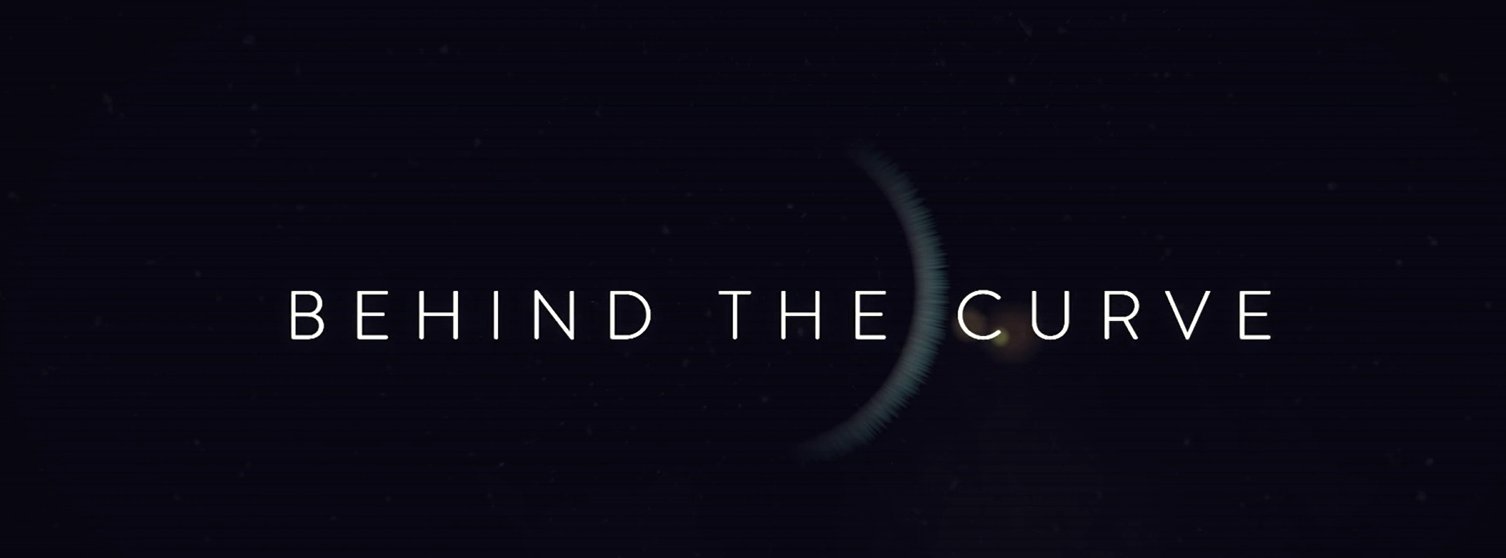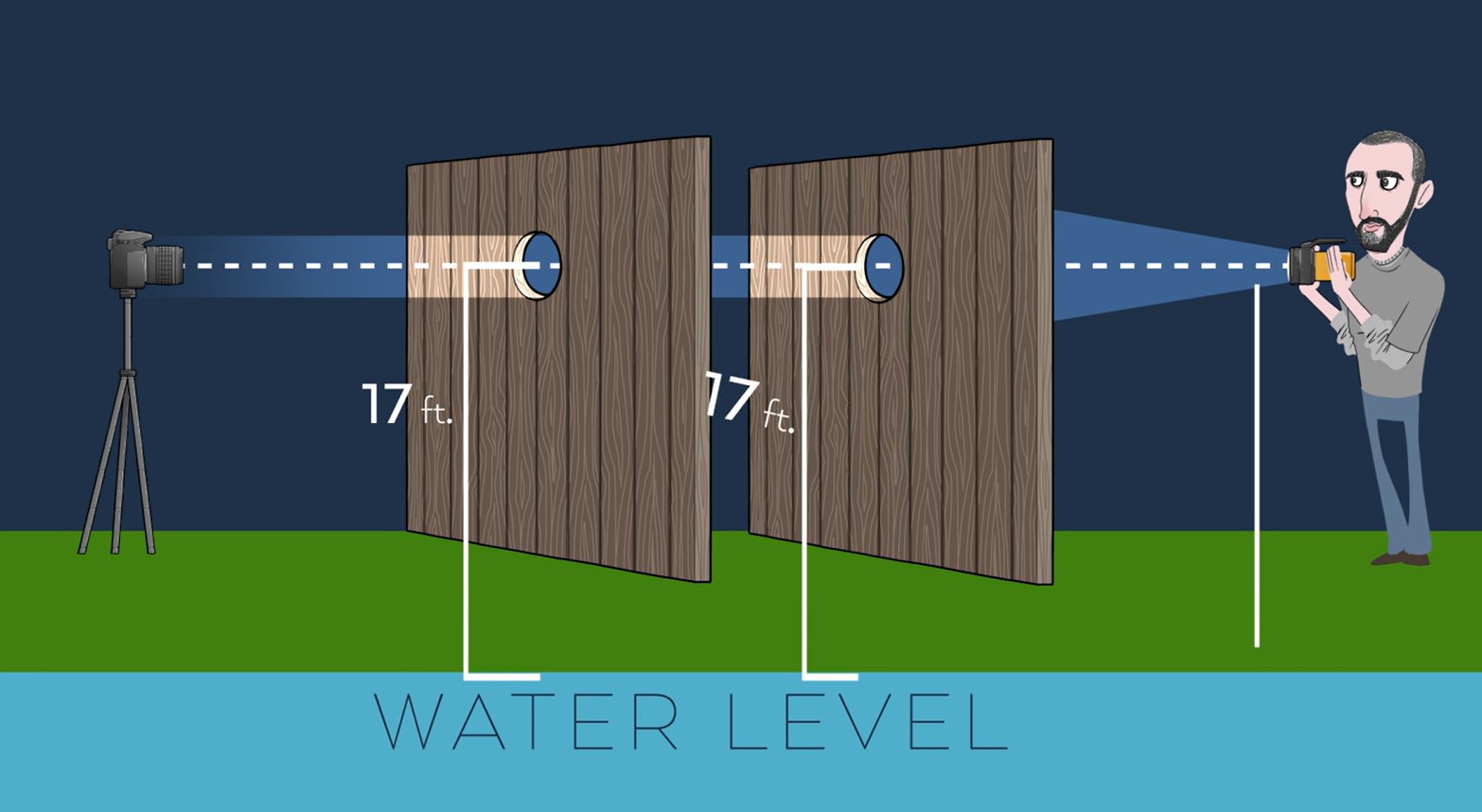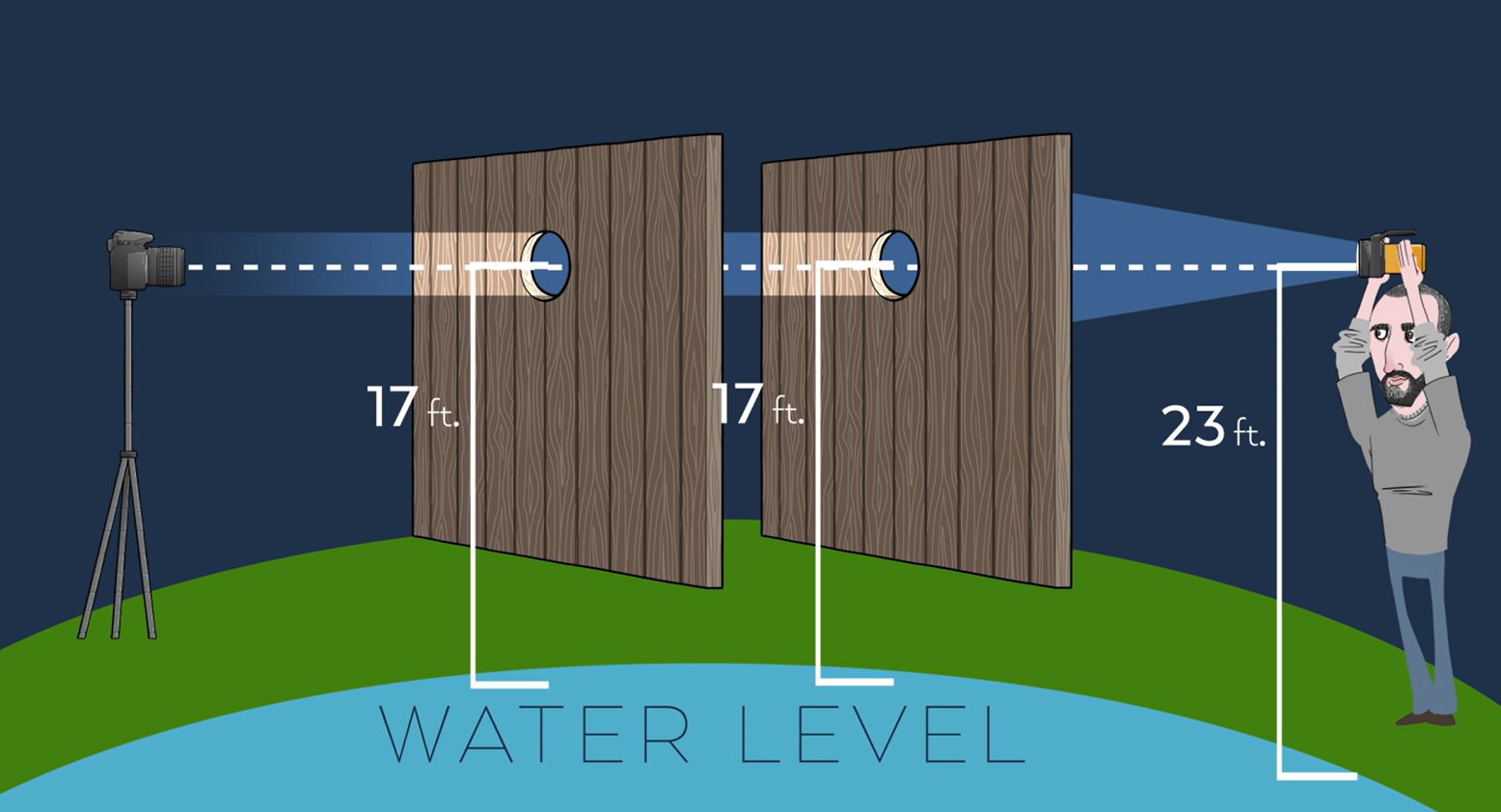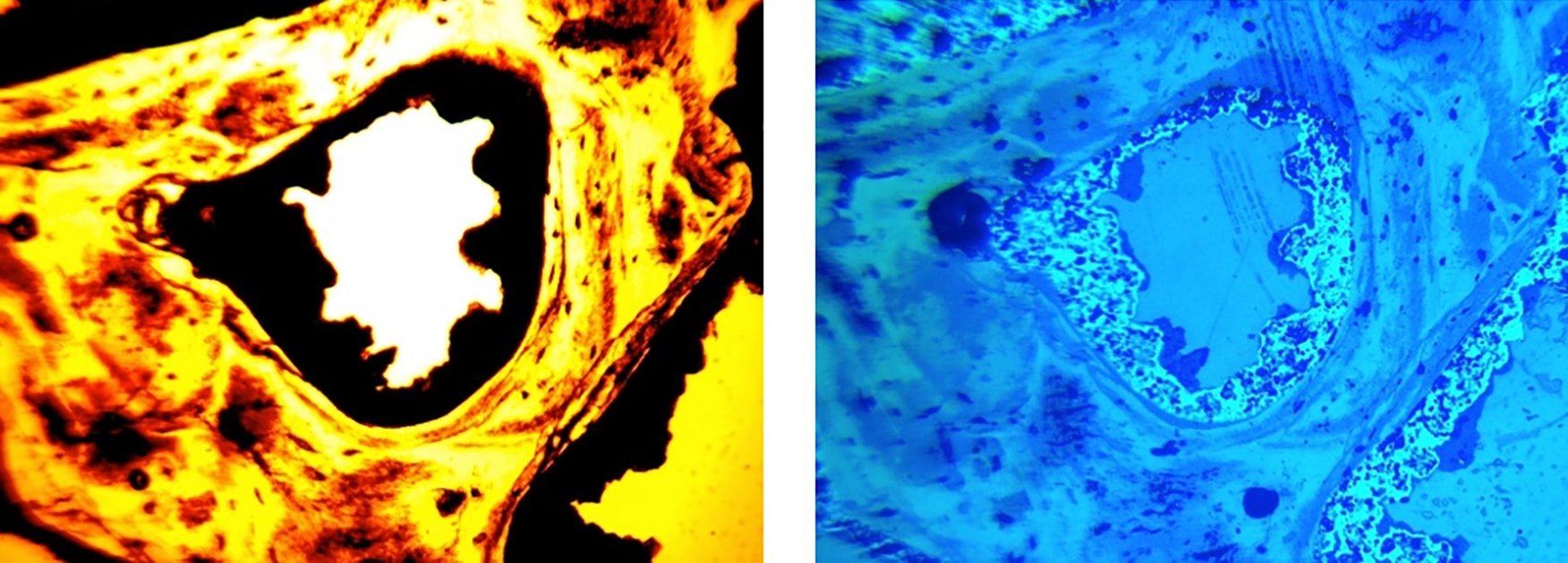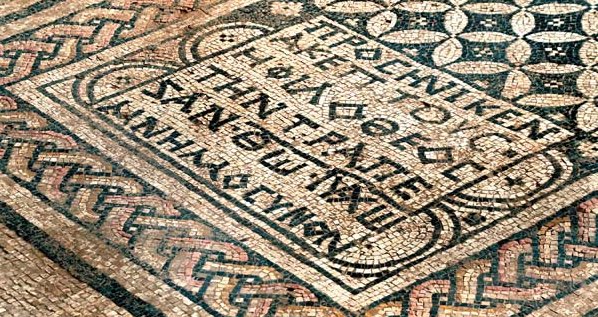
For some reason, I missed the discovery of this amazing mosaic when it was announced. However, a pastor friend of mine recently shared this article, which indicates that the mosaic might be coming to the Museum of the Bible here in the U.S., so I looked into it and decided some of my readers might be interested.
The story begins in 2004 when a prison in northern Israel was planning some new construction. Archaeologists came to ensure that the construction wouldn’t destroy any historically-valuable material, and it’s a good thing they did, because they found that the prison had been built over an ancient Christian house of prayer. It is now thought to be the earliest known Christian prayer hall, dated to be from approximately AD 230!1
More importantly, a portion of the mosaic (shown above) says, “The God-loving Akeptous has offered the table to God Jesus Christ as a memorial.”2 The table isn’t there, but it probably functioned as an altar. However, the message of the mosaic is clear: Jesus Christ is God. This is important, because some popularizers of Christian scholarship claim that the early church didn’t believe in the Divinity of Christ. For example, in her book, A History of God: The 4,000-Year Quest of Judaism, Christianity and Islam, Karen Armstrong claims:3
After his death, his followers decided that Jesus had been Divine. This did not happen immediately; as we shall see, the doctrine that Jesus had been God in human form was not finalized until the fourth century. The development of Christian belief in the Incarnation was a gradual, complex process.
If that sounds familiar to you, you might recognize it from Dan Brown’s The Da Vinci Code. No serious scholar of early Christianity believes such nonsense, because there is ample evidence that says otherwise. Nevertheless, since it was in the popular book-turned-movie, I encounter a lot of people who believe it. Well, here is a mosaic that predates the fourth century by about one hundred years, and it says that at least those who came into this prayer hall knew that Jesus is God.
Of course, we don’t need this mosaic to tell us that the early church believed in the Divinity of Christ, since lots of early church fathers are on record about it. Here is a sampling:
Ignatius of Antioch (c. AD 50 – c. AD 110):
I Glorify God, even Jesus Christ, who has given you such wisdom. For I have observed that you are perfected in an immoveable faith, as if you were nailed to the cross of our Lord Jesus Christ…
[Epistle to the Smyrnaeans]Hence every kind of magic was destroyed, and every bond of wickedness disappeared; ignorance was removed, and the old kingdom abolished, God Himself being manifested in human form for the renewal of eternal life.
[Epistle to the Ephesians]
Justin Martyr (AD 100 – AD 165):
And that Christ being Lord, and God the Son of God, and appearing formerly in power as Man, and Angel, and in the glory of fire as at the bush, so also was manifested at the judgment executed on Sodom, has been demonstrated fully by what has been said.
[Dialogue with Trypho]…but now you will permit me first to recount the prophecies, which I wish to do in order to prove that Christ is called both God and Lord of hosts…
[Dialogue with Trypho]…the Father of the universe has a Son; who also, being the first-begotten Word of God, is even God. And of old He appeared in the shape of fire and in the likeness of an angel to Moses and to the other prophets; but now in the times of your reign, having, as we before said, become Man by a virgin, according to the counsel of the Father, for the salvation of those who believe on Him…
[First Apology]
Irenaeus of Lyons (c. AD 130 – c. AD 200):
For I have shown from the Scriptures, that no one of the sons of Adam is as to everything, and absolutely, called God, or named Lord. But that He is Himself in His own right, beyond all men who ever lived, God, and Lord, and King Eternal, and the Incarnate Word, proclaimed by all the prophets, the apostles, and by the Spirit Himself, may be seen by all who have attained to even a small portion of the truth. Now, the Scriptures would not have testified these things of Him, if, like others, He had been a mere man…. He is the holy Lord, the Wonderful, the Counselor, the Beautiful in appearance, and the Mighty God, coming on the clouds as the Judge of all men;—all these things did the Scriptures prophesy of Him.
[Against Heresies]
Like many things we learn from our culture, then, the idea that the early church didn’t believe in the Divinity of Christ is demonstrably false. This Mosaic simply adds more evidence to the huge pile.
REFERENCES
1. Yotam Tepper and Leah Di Segni, A Christian Prayer Hall of the Third Century CE at Kfar ‘Othnay (Legio), Publication of the Israel Antiquities Authority, p. 50, 2006.
Return to Text
2. Ibid, p. 36.
Return to Text
3. Karen Armstrong, A History of God: The 4,000-Year Quest of Judaism, Christianity and Islam, (Ballatine Books, 1993), p. 81
Return to Text

